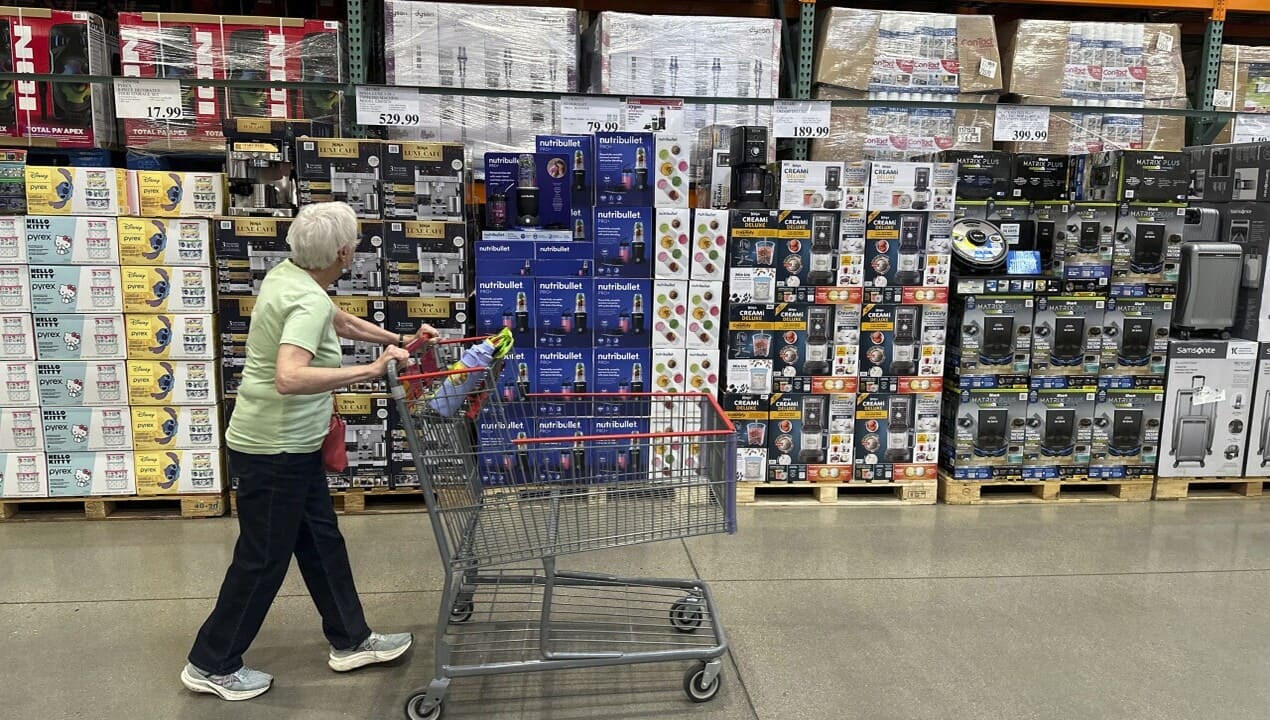
Independent Report – U.S. consumer prices rose modestly in May, with the Consumer Price Index (CPI) increasing by only 0.1%, according to a report released by the Labor Department on Wednesday. The slight increase came as lower gasoline prices helped to offset rising housing costs. However, analysts warn that inflation could rise more significantly in the months ahead due to the impact of new tariffs imposed by the Trump administration.
While prices for essentials like shelter and food increased, overall inflation remained muted. A key factor behind the modest price changes is that many retailers are still selling goods imported before tariffs were applied. As a result, the full effect of tariffs on consumer prices has not yet been fully realized. For instance, Walmart indicated that it would begin raising prices in late May and June, a sign that the impact of tariffs could soon be felt more directly by consumers.
The report also noted that underlying inflation pressures remained subdued. A 0.3% rise in shelter costs, mainly driven by rental prices, was the primary contributor to the monthly CPI increase. Meanwhile, food prices rose 0.3% after a slight dip in April, with notable increases in the cost of cereals, baked goods, and produce. Egg prices dropped 2.7%, and prices for meat, dairy, fish, and nonalcoholic beverages also declined compared to the previous month. Gasoline prices fell by 2.6%, helping to offset some of the upward pressure on inflation.
Also Read : Pentagon Justifies Troop Deployment to Support ICE Agents
Over the 12-month period through May, the CPI rose 2.4%, slightly below economists’ expectations of a 2.5% year-over-year increase. The month-over-month inflation rate also came in under the forecasted 0.2% increase. Some economists say that inflation is likely to accelerate later this year as businesses begin to pass higher import costs onto consumers more gradually to avoid triggering a sudden price shock or attracting political backlash.
President Trump has repeatedly claimed that tariffs are paid by foreign exporters, but businesses have warned that costs are often passed down to consumers. Despite this, the administration has pressured large retailers, such as Walmart, not to raise prices in response to the duties.
Excluding the often volatile food and energy components, the so-called core CPI also rose 0.1% in May, a slowdown from April’s 0.2% increase. Within the core index, shelter continued to climb, but prices for hotel and motel accommodations slipped 0.1%. Healthcare costs increased 0.3%, including a 0.6% rise in prescription drug prices. Other notable increases were seen in motor vehicle insurance, personal care, and household furnishings. On the other hand, airfares dropped by 2.7%, and both used and new vehicle prices declined.
Year-over-year, core inflation held steady at 2.8%, matching April’s rate. Although the Federal Reserve uses different inflation indicators for its 2% target, this data is likely to inform their decision-making. The Fed is expected to leave interest rates unchanged at its upcoming meeting. Though there is growing optimism in financial markets for a rate cut in September.
There are growing concerns about the reliability and coverage of economic data. The Bureau of Labor Statistics (BLS) recently announced it would suspend CPI data collection in three cities due to limited resources. The agency has faced staffing reductions caused by government-wide cuts, including mass firings, early retirements, and a hiring freeze.
Additionally, the BLS will stop publishing around 350 indexes from the Producer Price Index starting in August, citing resource constraints. Some experts have raised concerns about the increasing reliance on alternative calculation methods. Such as different cell imputation, which they argue may affect data accuracy. However, the BLS defended its methodologies, stating that all published data meets established quality standards.
A former BLS commissioner noted that staffing shortages have become critical. With the agency reportedly operating with at least 15% fewer employees. These challenges could impact the quality and timeliness of economic reporting going forward.
Also Read : Sky High Beats: Claudine Live at CÉ LA VI Rooftop